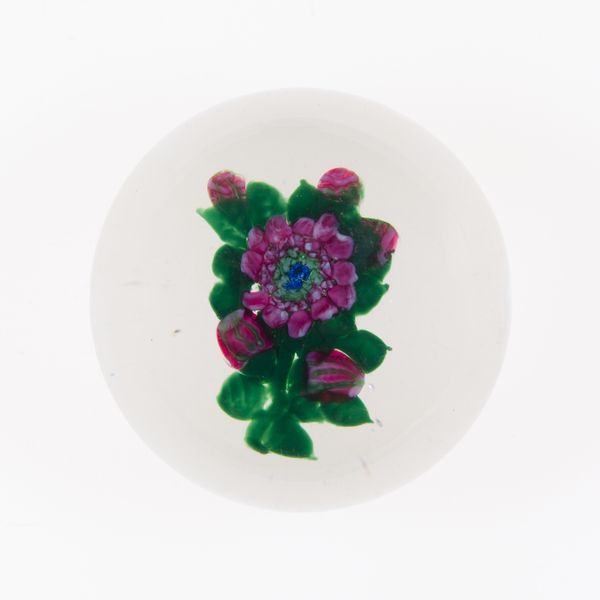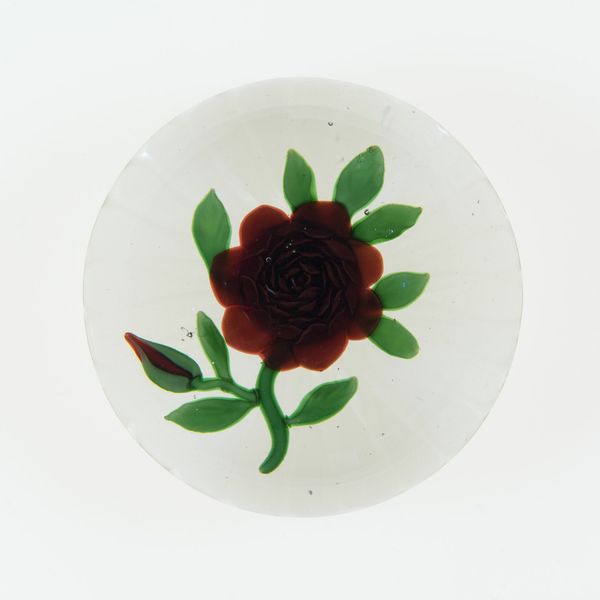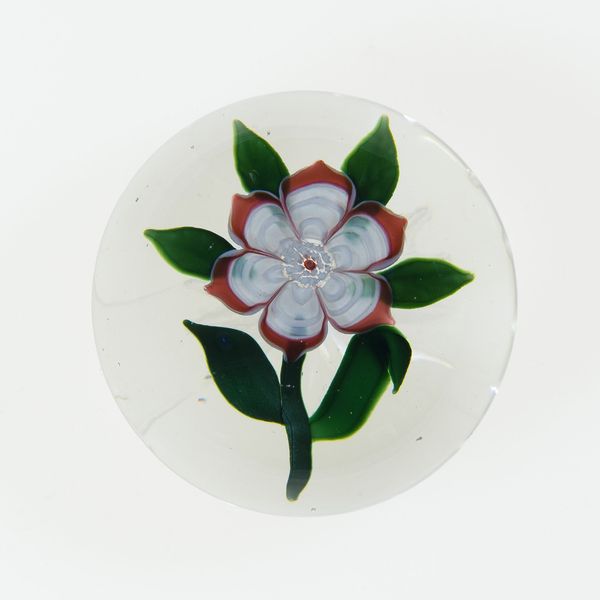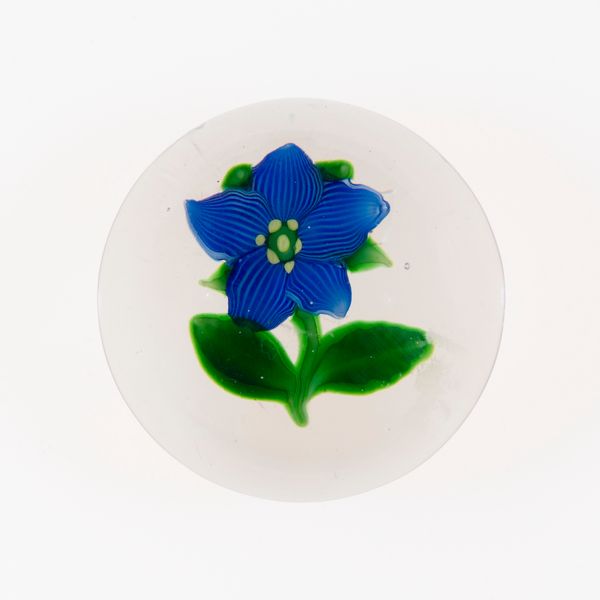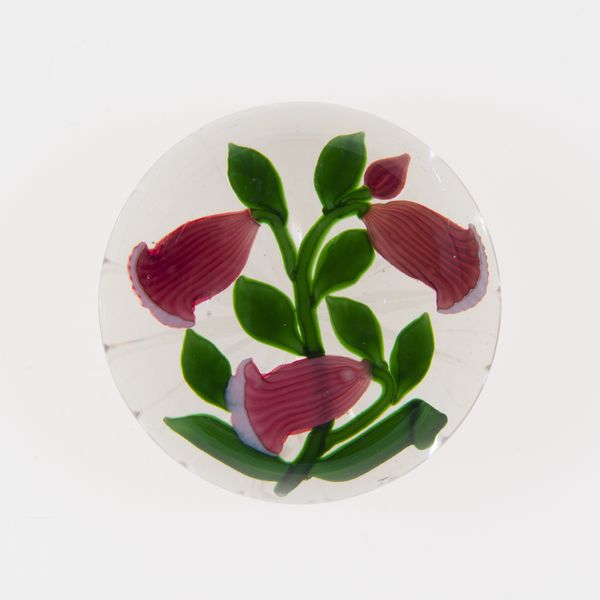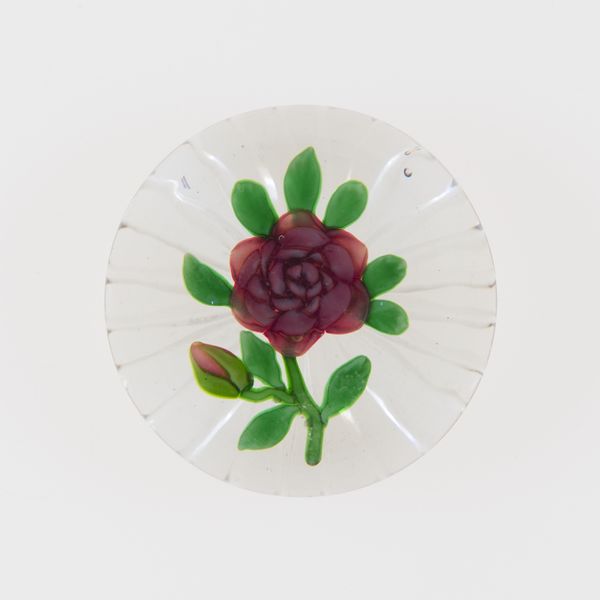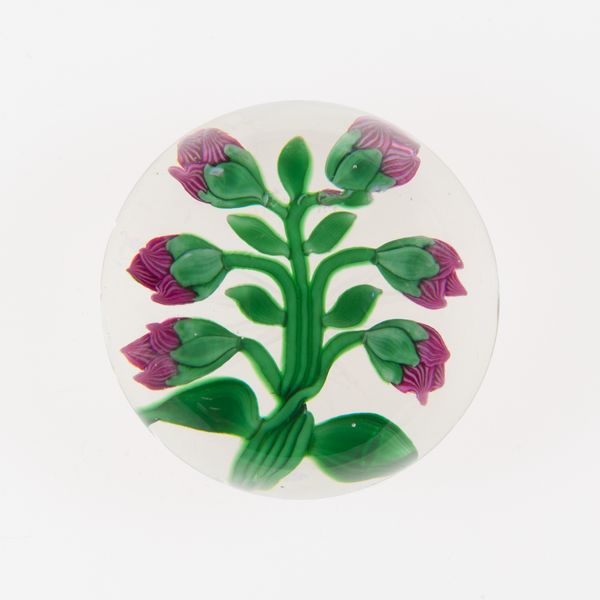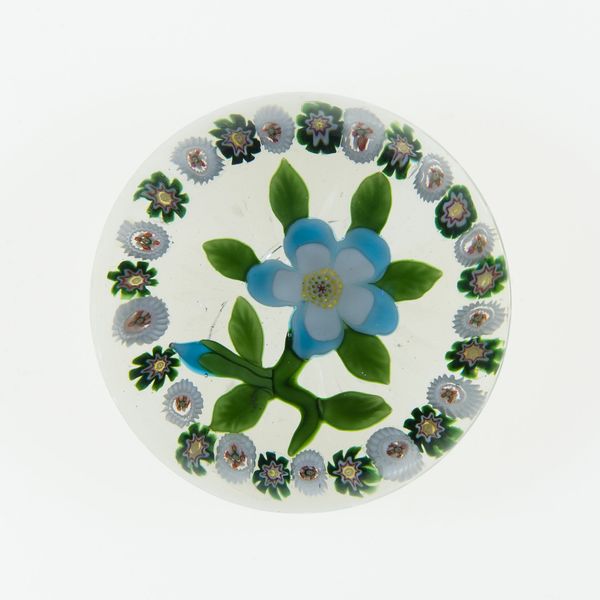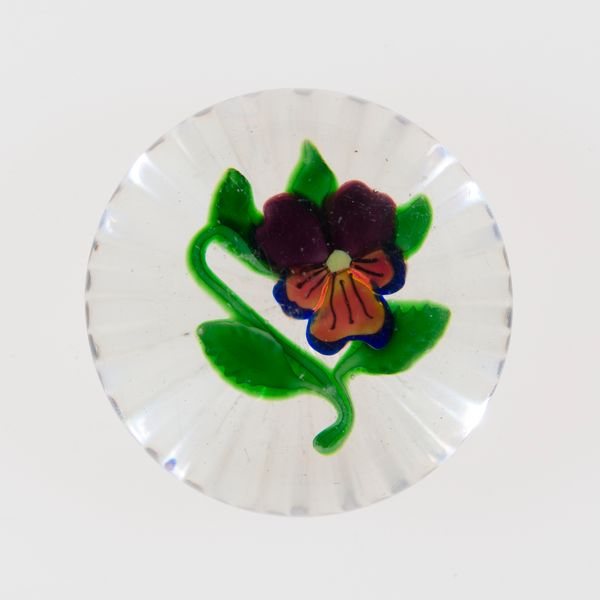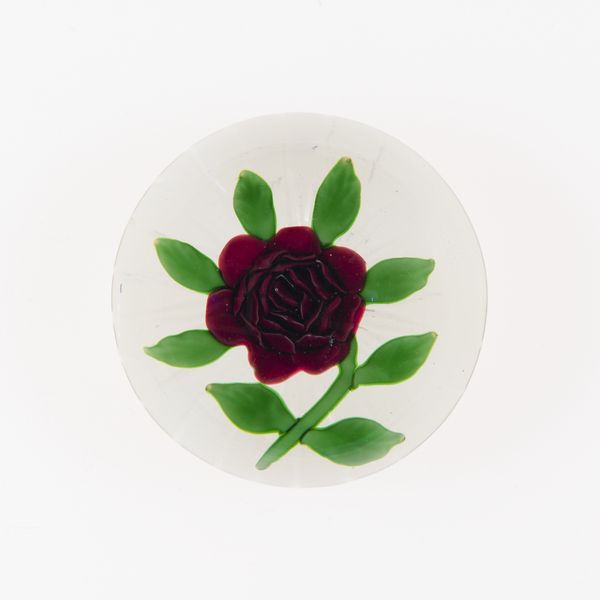
glass
#
glass
#
decorative-art
Dimensions: Diam. 8.6 cm (3 3/8 in.)
Copyright: Public Domain
This paperweight was created by the Clichy Glasshouse in France, sometime between 1837 and 1885, using lampworking and glass-casting techniques. The first step in creating this glass paperweight would have been to make the floral components using a process known as lampworking, manipulating softened glass canes, using gas-fueled torches and hand tools to build the individual flowers and leaves. These intricate glass components were then arranged, and encased within a sphere of molten glass, trapping and magnifying the delicate forms. This kind of glasswork requires a highly specialized skill, and the glasshouse would have been divided into specialist roles, organized under a factory system. The rise of glass paperweights coincides with the Industrial Revolution, and reflects a new type of production, tied to social issues of labor and consumption. Considering its materials, its making, and its context can truly help us understand the full meaning of this object, challenging the traditional distinctions we make between fine art and craft.
Comments
No comments
Be the first to comment and join the conversation on the ultimate creative platform.
